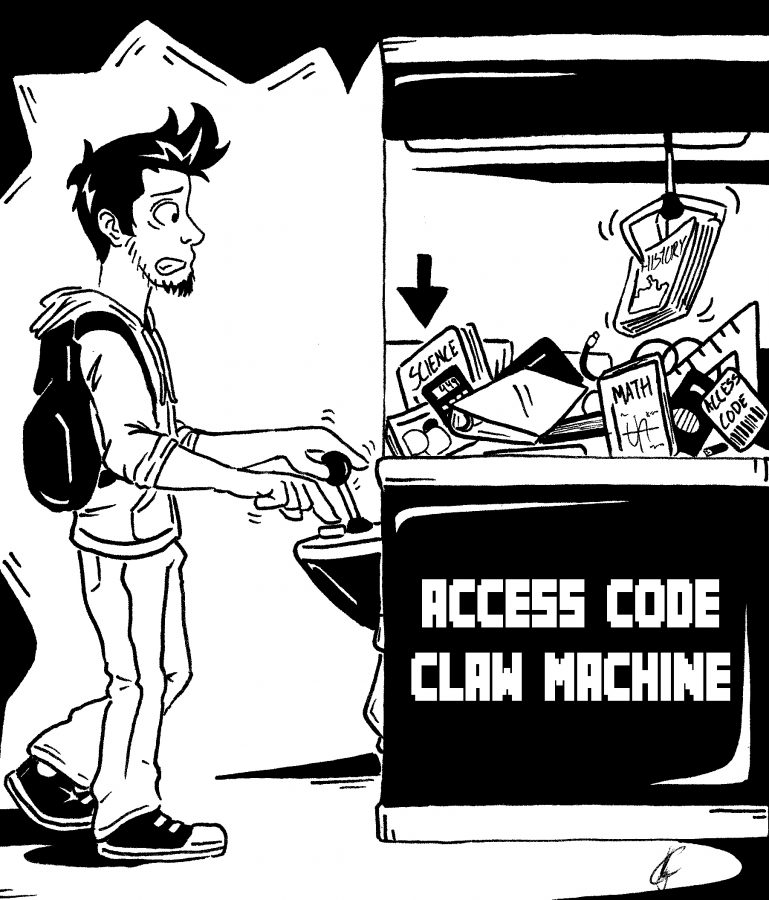“Bueno, bonito, y barato” as the saying goes, as financially struggling students we want things good, pretty and cheap.
That applies to our education as well.
We have the right to a good education at a cheap or reasonably low-cost. Our online course offerings have continued to grow, however so have our fees.
No one is arguing the practicality and the benefits that come with learning in the comfort of your own home.
Or that the Internet and other digital technologies have become thoroughly integrated in the lives of today’s college students.
The current trend in education is to increase tuition costs and go toward online classes.
Online courses are more:
· Time efficient.
· Allows 24/7 access.
· Flexible so online classes gear toward the variety of student’s schedules.
The online course system does not require students to be online at specific times; you can make it mold into your schedule.
You can see what works for you as opposed to attending an actual lecture class at a specific time.
Students get to logon at their convenience to keep up with the due dates and course requirements.
While it may seem that online education is a favorable option, truth is the benefits do not offset the expensive price.
In today’s era students are not only attending school but have to attend to other responsibilities like having to work because living expenses demand more money than what financial aid provides.
The First question then becomes how much to pay for all these benefits?
Although there are many benefits that come with online classes being cheap is not one of them.
Units for online classes cost exactly the same as standard classes; and sometimes come with an additional cost of having to buy an access-code for the online software needed for the class.
Having to purchase an access-codes that can cost anywhere from $30 to over $100 means that students have to decide between purchasing food or the required class materials.
Pearson Public limited Company is one of the largest education company and the largest book publisher in the world, according to publishersweekly.com.
It is also the only software company the college uses for its online courses.
According to the Pearson North America website students can have access to the site for as little as $85.50.
What that translates to is paying $85.50 to take test for one semester of the class.
On a student’s budget paying for one access code, or multiple access codes to take test is appalling.
Without the access-code students cannot access the site to complete assignments and take quizzes, midterms and finals.
The high cost of internet service is also an issue with online classes.
The use of the college’s computer labs required students to be on campus and abide by the colleges hours of operation.
That means no holiday or spring break access to a reliable internet connection; and as we all know there’s always assignments to turn in over those dates.
The second question then becomes are online classes effective?
Although students take the online courses because it’s more time efficient, it isn’t necessarily the best decision.
Discipline comes to play. Being an online student would only work if you have self-discipline.
Getting home from work and spending effort, and the energy you have left on your course requirements becomes a challenge.
Choosing to sit in front of the computer instead of going out and having a social life is an exercise in self-control.
Siting and being a couch potato becomes detrimental to passing the course.
Other perils of online classes include:
· Having minimal interaction with the class instructor. Unless you show up to office hours or have email discussions.
· Learning retention is lower when there’s no one to oversee that you are actually understanding the material beyond completing the minimal course requirements.
· Instructors can’t tell if the students are following the lecture
· It is also easier to cheat, it is an unnecessary temptation for the students who are struggling to pass their English, and math requirements.
More hybrid classes should be offered, with affordable alternatives to purchasing a required access-code.
Although the college cannot dictate the price for the access codes it can offer the use of free alternatives. in the class or set up a fee-waver for low-income students.
For example letting students come take the quizzes and turn in homework during professor office hours or through the use of free online options like google email, docs, and drive.
Or creating a fee-waver to cover the cost of the access code for low-income students.
Extending the libraries business hours would also provide students with more flexibility for the use of the computers and internet connection to complete assignments.
Hybrid courses combine the best that both an online class and a standard teaching class have to offer.
Students meet during a specific time in class and are then supplemented with online course requirements.
An on campus standard class gives students discipline to get work done and so would a hybrid class.
Students should interact with fellow classmates, and instructor along with their online material.
Traditional face-to-face classes enhance learning experience.
A good college education requires students to interact with more than a book or a computer.

















